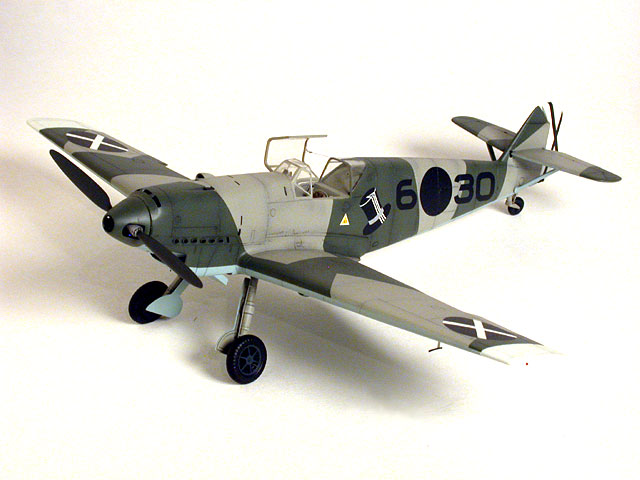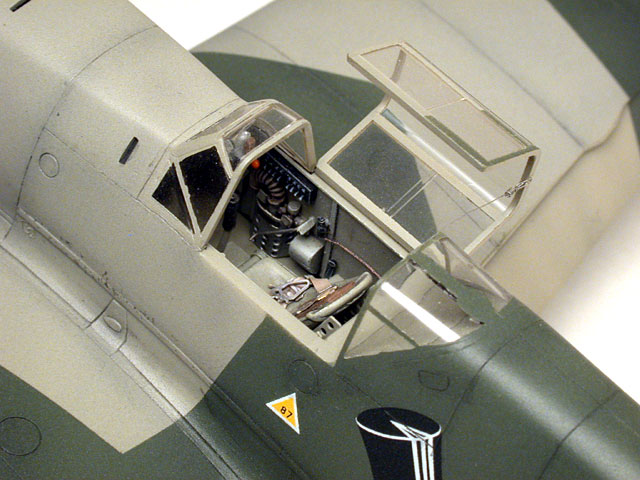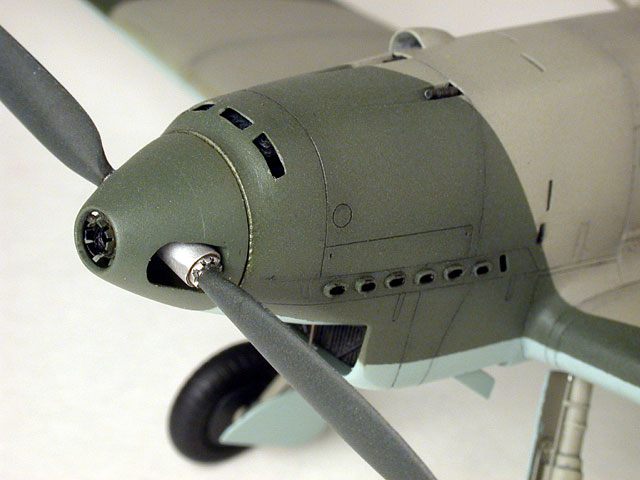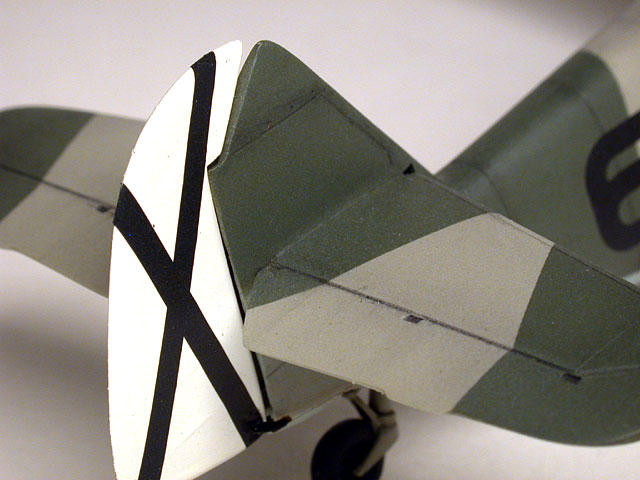|
HobbyCraft's
1/48 scale
Messerschmitt Bf 109B-2
by Jean Gratton
|
 |
|
Messerschmitt Bf 109B "Bertha" |

Academy's Messerschmitt Bf 109D
is available online from Squadron
The Messerschmitt bf 109 B-2 is probably the least known model of the
109 family.
Better known to its pilots as the Bertha, it was Germany’s first modern
fighter to enter service. A monoplane with retractable landing gear, it
still retained the lighter armament of earlier biplane fighters while
the power was provided by a 600hp-carbureted version of the Junker Jumo
611 engine.
Regardless of its power and armament shortcomings the Bertha
re-established the balance of power when it entered the Spanish civil
war. It is on this aircraft that many of Germany’s “Expertens” honed the
skills and techniques that would serve them so well later on.
HobbyCraft's Kits
HobbyCraft released a series of 109’s in the early 1990s. First the
Jumo engined B, C and D types then later, the more common, E-1 thru E-7
series. Straight out of the box these kits build into a fairly good
representation of the E model. However things get a little complicated
if you want an accurate replica of the early types. The problems comes
from the fact that HobbyCraft, in an effort to produce all these
variants from the same basic moulds, have overlooked the specific
details of each type. In most cases this is limited to misplaced or
omitted panel lines, but in others it is a little more flagrant.

The cockpit is one such area, in the excellent book from A-J press there
is a drawing showing a completely different layout of the starboard
side. Hobbycraft unfortunately molded this just the same as their later
variant. I had planned to use the Edward PE set but since they committed
the same mistake I decided the scratchbuild the missing details.
Additions and Modifications
Here are some of the details added overall:
-
Scratchbuilt Revi gun sight.
-
Added a retaining wire for the
canopy.
-
Painted the interior frames of the
canopy.
-
Added short exhaust stubs to the
Edward PE parts.
-
Opened the engine vent showing a
mockup of the engine block.
-
Detailed the prop hub and central
section of spinner

-
Rescribed and relocated panel lines
and vents.
-
Added brake lines.
-
Relocated the horizontal stabilizers.
-
Detailed tail wheel.
-
Added tie down rings and wing tip
lights.
The markings I chose came from AeroMasters sheet 48-459 ¨The Spanish
Civil War ¨ part 2 and depict the airplane flown by Uffz. Wilhelm Staege
of 2.J/88. Its splinter camouflage was a nice change from the uniform
scheme normally associated with the B-2 of the Spanish conflict. Good
photographs and a colour profile of this aircraft can be found in
Classic publication’s “ Luftwaffe Colours Volume One
Section 2”.
Since these airframes where relatively new I decided from the onset that
weathering would be kept to a minimum, so no preshading techniques where
used. Photos show the planes in good condition and, being the pride of
the Luftwaffe, they would have been meticulously cared for by their
crew.
At this point I had to hit the reference books because as I checked out
the F.S. equivalent to RLM 63 I actually found two different colours.
Aren’t references great! One colour being a light grey the other a
greenish grey that looked a lot like RLM 02. The answer came from
Monogram’s Luftwaffe painting guide, and it quotes that RLM 02 was
originally introduced as RLM 63 and latter replaced it.

The light grey was use on the 61/62/63 camouflage patterns used on
bombers and may have been used on the single colour scheme applied to
other B-2’s while the green-grey was used in the 62/63 patterns. I’m no
expert in Luftwaffe colours and don’t pretend to be but this seemed to
me like a very plausible explanation to this enigma. So in the end I
decided to use Gunze H70 RLM 02 in lieu of RLM 63 and Testors Acryl RLM
62 & 65.
A gloss coat of Future floor wax was sprayed on in preparation for the
decals and Microscale’s setting solutions where used to conform them to
the surface. As usual with AeroMasters products they performed
flawlessly and because of the collaboration between the latter and
Classic publications they accurately represent the subject in the
photographs, which in unfortunately not always the case for AeroMaster's.
As you can see the HobbyCraft kit can be made into an accurate
replica of the original. I did make some additions but most of the
changes made are well within the average modeller’s range when it comes
to filling and adding panel lines or, even for the matter, making
improvements to a cockpit. This is a pleasant kit to build with no major
fit problems or any other vices, plus it is the only game in town.
So there, I finally have an early representation of the 109 to add to my
showcase. It does look a little frail amongst its latter comrades but
give a good idea of the evolution that these machines went through
during the war.
Click the thumbnails below to view larger images:
Bf 109D/E Aces
1939–41
Aircraft of
the Aces 11 |
|
| |
|
|
Author: John Weal
Illustrator: John Weal
US Price: $19.95
UK Price: £12.99
Publisher:
Osprey Publishing
Publish Date:
November
15, 1996
Details: 96 pages; ISBN: 1855325969 |
|
|
Model, Images and Text Copyright © 2005
by Jean Gratton
Page Created 27 January, 2005
Last Updated
27 January, 2005
|
Home
| What's New |
Features |
Gallery |
Reviews |
Reference |
Forum |
Search